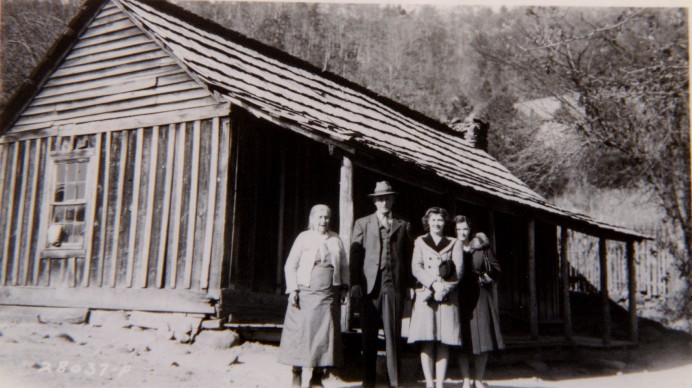 North Shore Heritage Memories
North Shore Heritage Memories North Shore Heritage Memories
North Shore Heritage MemoriesThe Oconaluftee Valley was the first part of Swain County that was settled by white people. People came through Soco Gap down Soco Creek and on down to the Oconaluftee River.
The Sherrill family settled at the mouth of Soco Creek, and he owned the land where Chesnut Inn is today. Around 1790 Dr. Joseph Dobson a veteran of the Revolution War entered into deed a tract of land on the Oconaluftee but the claim was void the land belonged to the Cherokee. Felip Walker did received a large land grant in the Oconaluftee valley around 1798 up Stoney Mt. and up Big Cove about 2560 acres he sold land to the early settlers. Then around 1800s John Jacob Mingus family, then the Rafe Hughes family, the John Beck family, the Collins family. Robert Collins 1806 he married Elizabeth Beck, many of the early settlers were squatters, they had a good relationship with the Cherokee. Many of the early settlers built cabin, cleared land and receive land grants after the Revolution war for their services, after the treaties with the Cherokees.
These were recorded in Buncombe County until 1808 where we belong until 1828 when Haywood County was formed, then 1851 Jackson County was formed, then in 1871 Swain County was formed from two counties Jackson and Macon. Now 86% of Swain County belongs to the Federal Government:
G.S.M.N.P. 217,451 acres 65%
T.V.A 7,337 acres 2.0%
U.S Forest Service 22,296 acres 6.5%
Cherokee Indian Reservation 29,466 acres 8.5%
Private 62,450 acres 18%
Sawmill Ravensford payroll of $150,000.00 per month
Smokemont sawmill payroll of $ 75,000.00 per month
At smokemont a ( Jitney) or that is what we called it, a bus with rail road wheels that ran from Smokemont, Ravenford, Cherokee, Ela, it carried kids to Whittier School and passenger also. A land grant to James Queen 100 acres in the mid 1850's Wilson Queen inheritance in 1883. Maisie Queen Young grandfather wheat fields became the mill pond and lumber yard for Champion Fiber Co. sawmill with rail way running through other parts of our property. After the sawmill left the fields became the C.C.C Camps, the park condemned our property and took it at their price. The park service came in took out the smoke stacks and mill pond filled it in with all the old remains of the sawmill and planted trees there, now it is the center of Smokemont camp ground that the park owns. Gone are all the pretty homes, the mill, the barn, rail fences and black smith shop.
Source: Maisie Queen Young